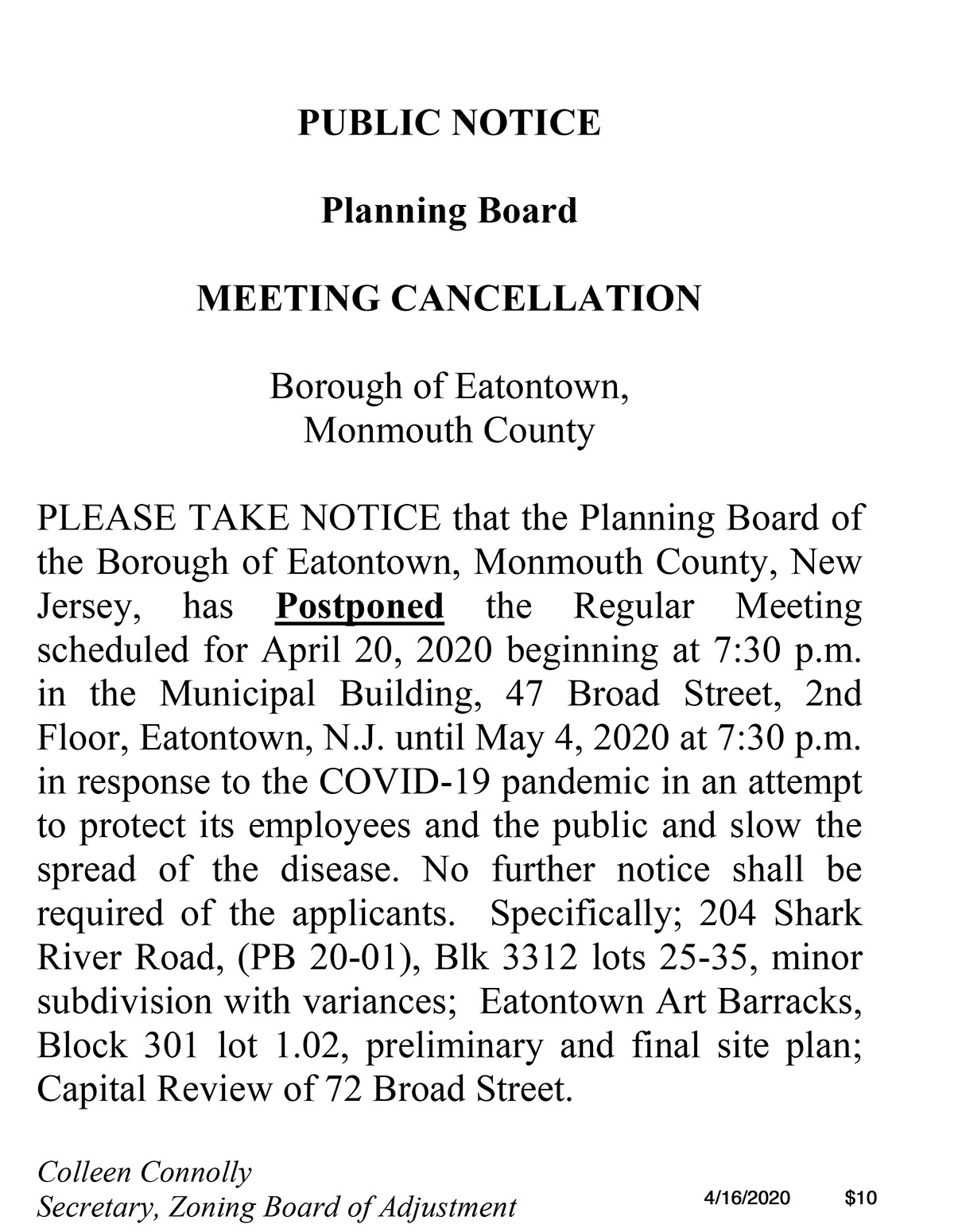Adorable Adoptables from the Monmouth County SPCA
April 20, 2020
Eatontown meeting rescheduled for May 4
April 20, 2020“Without such a plan, our response to COVID-19 will be greatly hindered and may pose severe consequences for communities across the country.”
Energy and Commerce Chairman Frank Pallone, Jr. (D-NJ) sent a letter to Coronavirus Task Force Coordinator Dr. Deborah Birx today calling on the Trump Administration to develop a widespread COVID-19 testing strategy as part of its efforts to reopen the economy. In the letter, Pallone raises serious concerns that the Administration appears to be abandoning its responsibility to develop a national testing plan, which could lead to a resurgence of the coronavirus outbreak as President Trump pushes to relax social distancing rules.
“As President Trump continues to push for relaxing social distancing guidelines and quickly reopening society, I am increasingly concerned about the lack of widespread testing in the United States, and what the ramifications will be if social distancing efforts are prematurely eased without robust testing in place to detect the spread of COVID-19,” Pallone wrote to Dr. Birx.
Last week, the White House released guidelines for state and local officials to reopen their economies, but the document did not include a national strategy or even outline how the Administration would expand the nation’s testing capacity.
“Instead of showing leadership, competence, and vision in a time of crisis, it appears the Trump Administration is abdicating its responsibility and forcing states and communities to fend for themselves and find their own way out of this pandemic,” Pallone continued.
State and commercial laboratories are still struggling with shortages of diagnostic tests, testing supplies and reagents, and questions have been raised about whether the Centers for Disease Control and Prevention‘s testing criteria guidelines are still too restrictive, preventing more people from receiving necessary tests.
“The Administration must develop and release a comprehensive and strategic testing plan, including the strategy for increasing diagnostic and serological testing capacity, the types and levels of testing necessary, benchmarks with clear timelines, the estimated costs involved in implementing such a plan, and specific guidelines to ensure adequate testing in rural and other underserved areas,” Pallone continued. “It is critical this plan also involve testing capacity in non-health care settings in order to help expand testing availability and make testing more accessible. Without such a plan, our response to COVID-19 will be greatly hindered and may pose severe consequences for communities across the country.”
Public health experts, including current and former Trump Administration officials, widely agree that a robust, national testing strategy is critical to the nation’s ability to successfully combat COVID-19 and reopen society. Earlier this month, an internal document drafted by Administration officials and obtained by the Washington Post noted that, “reopening will entail a significant risk of resurgence of the virus. Reopening is therefore conditioned on: confidence that incidence of infection is genuinely low [and] a surveillance system that is well functioning and capable of promptly detecting any increase in incidence[.]”
Despite these internal warnings from its own public health experts, the White House does not appear to have, or intend to propose, a national testing strategy even though one was apparently developed by the agencies and sent to the White House for review.
While Trump has repeatedly claimed that the United States is testing more than any country in the world, the United States is conducting fewer tests per capita than many other countries, including Germany, Italy, Canada and South Korea. Currently, only about one percent of the nation’s population has been tested and the Administration continues to recommend that tests be restricted to high-risk individuals only.
As part of his inquiry, Pallone requested answers to a series of questions detailed in his letter to Dr. Birx by April 24, including:
- The Administration’s plans for expanding testing and revising guidance on social distancing and reopening the economy.
- What diagnostic testing capacity is sufficient to reopen the economy and how does the Administration plan to reach that capacity?
- What are the Administration’s current estimates for the daily amount of tests it will have the capacity to administer by May 1 and then monthly thereafter through December 2020?
- What is the Administration’s plan to ensure the validity of, and expand access to, serological tests?




